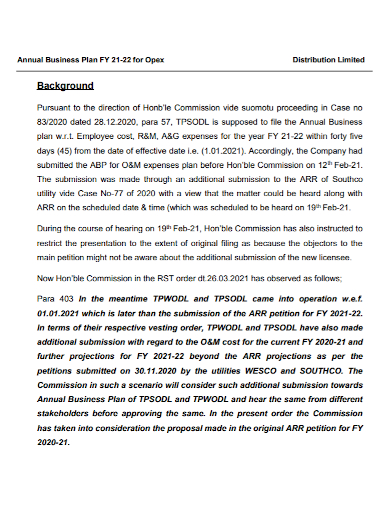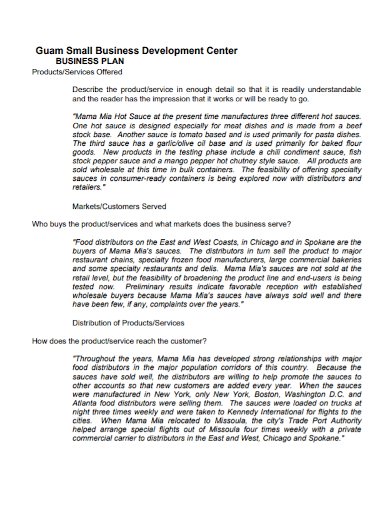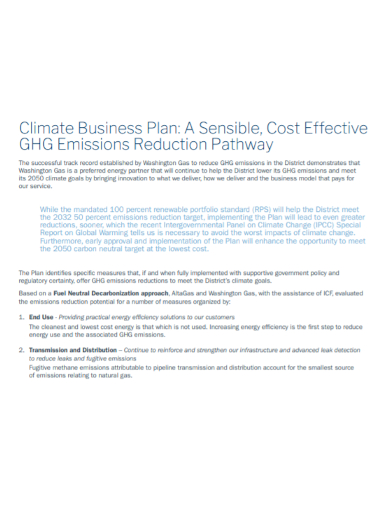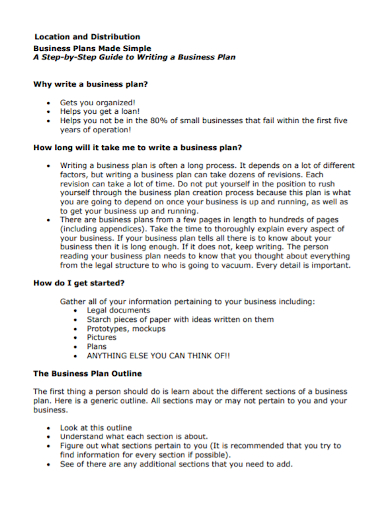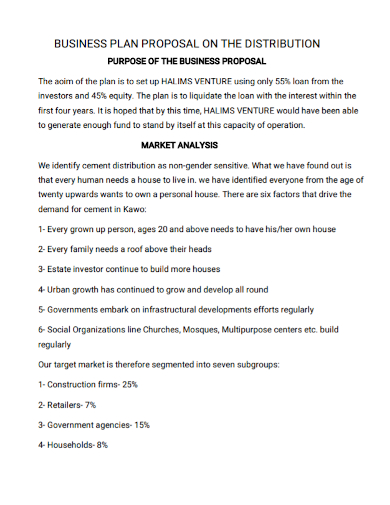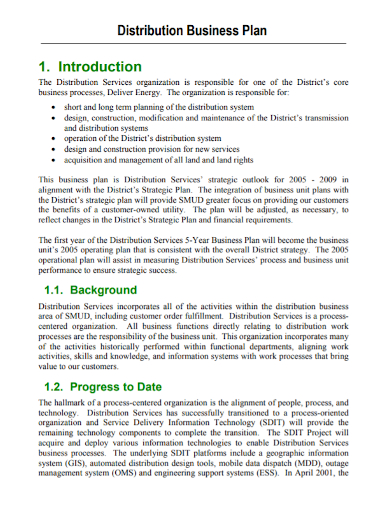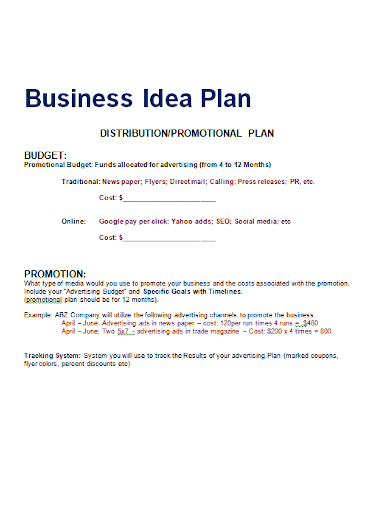Businesses are not simple entities to manage, even much less when you are dealing with an industry that involves a lot of movement. Distribution businesses are extensions of the much broader logistics industry. They manage how resources are distributed, acquired, and transported. they essentially take care of transporting goods from one place to another, control the movement and storage of materials, services, and information in the supply chain, depending on the client’s logistical and distribution needs.
Distribution businesses may not be the most recognized industry in the world since these companies usually operate behind the curtains of larger companies and corporations, making sure that movement is present and keeping the global supply chain functioning. This is why planning out the scopes ahead of time is good valuable practice to prevent wasting fuel and other resources on ventures or projects that may ultimately fail. A good and comprehensive plan just brings the overall concept together really well, making every business and distribution operation smooth as butter.
This is where business plans come into the picture. A business plan is a largely important document that any business or company need to have a guideline or a roadmap that the business will follow in order to achieve the goals it has set. Operating a business without establishing a business plan is largely discouraged because most companies that do, typically don’t last very long. Sticking to a well written business plan comes with a slew of benefits. Including being able to come up with ideas without investing too many resources in it. To properly get acquainted with with a distribution business plan, check out these samples that we have listed down below. After getting the gist of the document, you can then use these samples as a guide or even as a template for when you want to develop your own distribution business plan.
6+ Distribution Business Plan Samples
1. Distribution Annual Business Plan
2. Distribution Small Business Plan
3. Distribution Climate Business Plan
4. Location Distribution Business Plan
5. Distribution Business Proposal Plan
6. Distribution Services Business Plan
7. Distribution Promotion Business Plan
What Is a Distribution Business Plan?
A business plan is a written document that describes how a business would define its objectives and what steps are the managers willing to take to achieve their goals. A business plan lays out a roadmap for the business to follow derived from the perspectives of its different departments. From marketing, financial, to operational. Business plans are essential documents that’s usually used to attract an investment even before the company has made a name for itself. Although it’s more useful for startup or new businesses, every company should be able to establish as well written business plan.
It enables them to review and periodically update the document to see if the goals that they have set have been met and how the current circumstances have changed. A good business plan outlines all the projected and estimated costs of a project and the pitfalls of each decision the company makes. Even among competitors in the same industry, it is very rare for business plans to be identically similar to each other. Different companies tend to have different ways to deal and approach operational issues.
Elements of a Distribution Business Plan
The length of a business plan varies greatly depending on the scope of which the plan covers and the overall nature of the business. Information would usually fit into a 15 to 20 page document, but that is still up to you. Although no two business plans are alike, they do work with almost all the same elements. These elements will be discussed in detail right below.
- Executive summary
The company and all its relevant basic information should be summarized in the executive summary section. Mission-vision values, company leadership, employees, operations, and location. It should talk about what the company is, the nature of the business, and all other basic information. - Products and services
The company should then outline the products and services that they offer. This section will include pricing, product lifespan, and other customer benefits. Other factors that can be included are manufacturing and production processes, patents, and proprietary technology. - Market analysis
A company needs to have a clear idea of its target customers and their demographics. It should outline who or what the competition is in the industry and will give you a better idea of how to stay on top of the market. It will also describe the expected consumer demand for the product or service and how difficult it would be to take advantage of the market. - Marketing strategy
This section should describe how the company will attract the consumer base and what steps they are willing to take to keep it. It should include information about how it intends to reach the customers by outlining a clear distribution channel including advertising campaign, marketing, and through what mediums these campaigns will exist. - Financial planning
The company will have to include its financial planning to attract the audience of the business plan. Financial statements, balance sheets, and other information may be included as well. - Budget
Every company should have a proper budget in place. It has to cover costs, staffing, manufacturing, development, marketing, and all other business related expenses.
FAQs
Who reads a business plan?
Business plans are often summarized for individuals who work in and around the company. For outside entities, investors, lenders, suppliers, clients, and other executives, they are given a full copy of the plan.
What are the five elements of a business plan?
- Situation analysis
- Market
- Service positioning
- Setting objectives
- Strategy
What is a target market?
Target market refers to a group of customers or a small population of a specific demographic that has a similar need for a product or service, and has the money to avail said product or service.
The logistics and distribution industry is still a highly centralized and highly competitive industry. So naturally, establishing a business plan is always good practice. One last thing to remember is that a business plan should remain as a live document. Meaning it should be susceptible to change, as your company evolves and changes.
Related Posts
FREE 8+ Debt Management Plan Samples in PDF | DOC
FREE 10+ Sales Management Plan Samples in PDF | MS Word | Apple Pages | Google Docs
FREE 4+ 30-60-90-Day Marketing Plan Samples in MS Word | Google Docs | Apple Pages | PDF
FREE 10+ Higher Education Lesson Plan Samples in MS Word | Pages | Google Docs | PDF
FREE 9+ 30-Day Marketing Plan Samples in PDF | MS Word | Apple Pages | Google Docs
FREE 3+ Sales Team Action Plan Samples in PDF | MS Word | Apple Pages | Google Docs
Marketing Plan For Small Business Samples
FREE 7+ Fashion Business Plan Samples in PDF
FREE 10+ Sprint Planning Samples In MS Word | Google Docs | PDF
FREE 10+ Wedding Planning Samples in MS Word | Apple Pages | Powerpoint | PDF
FREE 9+ Monthly Study Planner Samples in PSD | Illustrator | InDesign | PDF
FREE 9+ Sample Curriculum Planning Templates in PDF | MS Word
FREE 10+ Teacher Development Plan Samples in MS Word | Google Docs | Apple Pages | PDF
FREE 10+ Basketball Practice Plan Samples in PDF
FREE 12+ School Business Plan Samples in PDF | MS Word | Apple Pages | Google Docs

